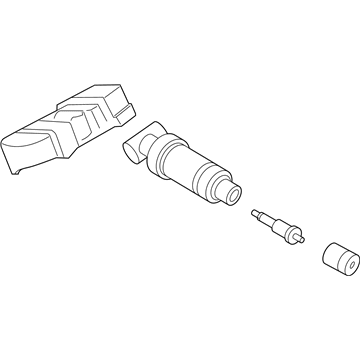Have you ever found yourself questioning the reliability of your 2020 Toyota Supra’s Tire Pressure Monitoring System (TPMS)? What if, amidst your thrilling driving experiences, you suddenly glance at the dashboard and notice that pesky warning light illuminated? Is it a cause for alarm, or just a minor inconvenience? In this guide, we delve into the nuances of troubleshooting TPMS problems specific to the 2020 Toyota Supra, equipping you with insightful strategies to conquer any tire-related dilemmas.
The TPMS is an ingenious safety feature designed to monitor tire pressure and alert drivers when levels dip below a certain threshold. While it’s a great ally for enhancing your vehicle’s overall safety and performance, like any electronic system, the TPMS can sometimes encounter challenges. Below, we’ll navigate the labyrinth of potential concerns and solutions, ensuring you remain empowered while embracing the joy of driving your Supra.
Understanding the TPMS System
The TPMS in your 2020 Supra employs sensors embedded within each tire to measure air pressure continuously. These sensors transmit data to the vehicle’s onboard computer, which processes the readings. If your tires lose air, the system triggers a warning light on your dashboard, compelling your attention. This feature, while invaluable, can sometimes lead to confusion for drivers, especially if it malfunctions.
Common Issues with TPMS in the 2020 Supra
What happens when the TPMS light blinks incessantly, seemingly without justification? Or worse still, what if the light refuses to dim, even after you’ve confirmed that your tire pressures are optimal? Let’s examine several prevalent issues that drivers may encounter with the TPMS system:
- Flat Tire or Low Pressure: The most obvious culprit for a TPMS alert is a flat tire or one that’s been deflated. Regularly checking tire pressure and conducting thorough visual inspections can help in identifying issues before they become problematic.
- Faulty TPMS Sensors: Each of your tires’ sensors may wear out due to prolonged exposure to heat, moisture, and road debris. A malfunctioning sensor can inaccurately report tire pressure readings, leading to unnecessary alert signals.
- Battery Failure: TPMS sensors are battery-operated. If a sensor’s battery dies, it can fail to transmit pressure information, causing the warning light to illuminate.
- Aftermarket Modifications: Did you recently install aftermarket tires or wheels? Such changes can disrupt the TPMS, leading to warning alerts if the new configurations are incompatible with the existing system.
- System Reset Requirements: If your Supra has undergone any tire rotation, replacement, or other maintenance, the TPMS may require a reset. Failing to do so could lead to persistent alerts that are devoid of a legitimate cause.
Step-by-Step Troubleshooting
Don’t let your TPMS insights lead to mere frustration. Armed with knowledge, you can systematically troubleshoot the alert. Here’s a step-by-step guide to assist:
- Check Tire Pressure: Start by using a reliable tire pressure gauge to measure each tire’s pressure, including the spare. Ensure that they match the recommended specifications indicated in your owner’s manual or on the door jamb sticker.
- Inspect for Damage: Examine each tire for visible punctures, cracks, or uneven wear patterns. Any signs of distress warrant immediate attention to prevent further complications.
- Verify Sensor Functionality: If you suspect a faulty sensor, have it checked using diagnostic tools at a Toyota service center. Technicians can assess whether the sensors are transmitting accurate data.
- Reset the TPMS: If you recently rotated your tires, utilize the TPMS reset tool, found in the vehicle’s manual, to recalibrate the system. Often, a simple reset can rectify ongoing issues.
- Consult with Professionals: If the light remains stubbornly on after following the above steps, it’s wise to schedule an appointment with a qualified mechanic or dealership specializing in Toyota vehicles.
Prevention: Maintaining TPMS Health
- Routine Inspections: Conduct routine checks on your tire pressure, ideally once a month and before long journeys, to ensure all tires are adequately inflated.
- Regular Sensor Checks: Have your TPMS sensors examined during regular vehicle maintenance intervals, particularly before or after seasonal tire changes.
- Keep an Eye on Tire Quality: Invest in high-quality tires that suit your driving style and conditions. High-performance tires with durable manufacturing processes can enhance sensor longevity.
- Be Mindful of Aftermarket Products: Always confirm compatibility before introducing modifications to your vehicle. Consulting with experts can prevent the introduction of potential conflicts within the TPMS.
In conclusion, the TPMS in your 2020 Toyota Supra is a sophisticated system designed to enhance your driving safety. However, when challenges arise, understanding the intricacies of troubleshooting can elevate your driving confidence. Remember, data-driven insights and proactive maintenance are key components in ensuring your tires remain in optimal condition, allowing you to savor every exhilarating moment behind the wheel. So the next time your dashboard light blinks, you’ll be ready to rise to the challenge and conquer any TPMS troubles with ease!
